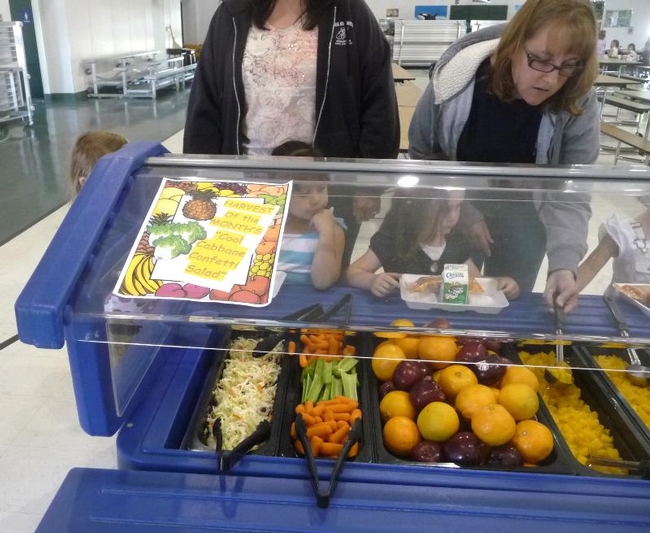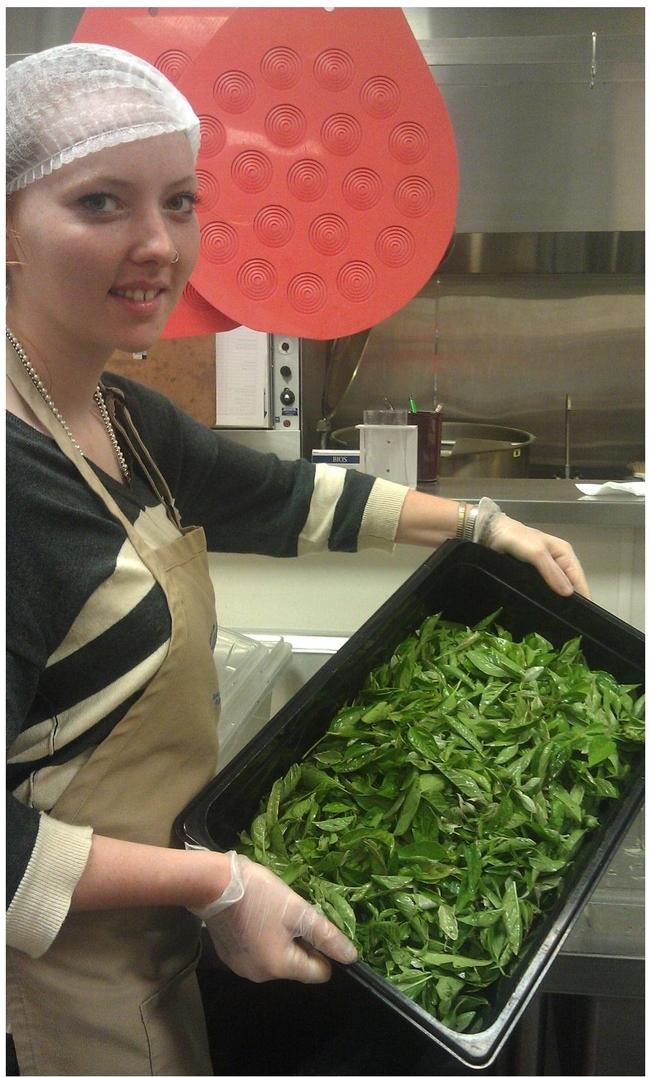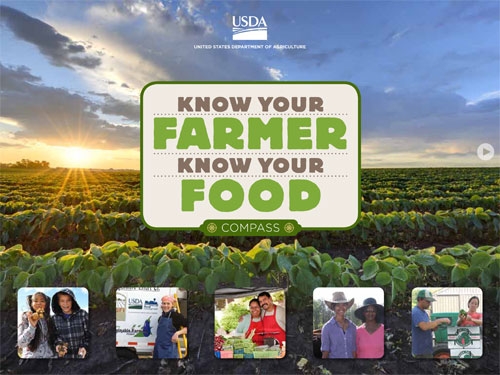Posts Tagged: farm-to-school
UC helps Davis Farm-to-School find success for over a decade
A secret to success, says UC SAREP’s program assistant Jeri Ohmart, “is patience and persistence. Keep your eye on the prize — increasing fresh, local, seasonal products in the school meal program; and creating an environment that teaches the full cycle from garden to cafeteria to compost and back to garden.”
The results of the evaluation, now available on SAREP’s website, are promising. For the 2012-2013 school year, the Davis Unified School District purchased nearly 53 percent of its produce from local farmers, a 20 percent increase from the previous year. The program’s recycling efforts showed waste from elementary schools decrease by a third. The program has implemented taste testing sessions to encourage students to try new, healthy foods, offered professional development cooking classes for school cooking staff, and incorporated gardening and cooking classes into school curriculum.
Ohmart, who conducts the annual evaluation says the biggest lesson learned over the last 12 years of evaluations is not how to get the freshest produce or the healthiest meal. The lessons are much more salient. “To meet the goals of the farm-to-school program requires developing solid relationships based on mutual respect and trust — with food service directors, staff, maintenance and operations, school board members, teachers, and parents. Engage the larger community in any way possible. These are the principles that have kept our program moving in positive directions despite budget setbacks and the vagaries of funding and personnel shifts.”
To learn more about Davis Farm-to-School, visit their website. Read the full Davis Farm-to-School Evaluation or the Summary and Recommendations. Learn about more of SAREP's farm-to-school work on the SAREP web site.
Know your farmer, know your food
The 2008 Farm Bill provided more support for local and regional agriculture. In 2009, under the leadership of deputy secretary Kathleen Merrigan, the USDA launched its Know Your Farmer, Know Your Food initiative, with an eye towards doing just that. The list of initiative goals is lengthy, but include promoting, locally and regionally produced and processed foods; expanding access to affordable and fresh food; and demonstrating the explicit connections between food, agriculture, communities and the environment.
Know Your Farmer, Know Your Food is a USDA-wide effort. It is not a new department, but rather, an effort that seeks to more effectively connect existing USDA departments and work to strengthen local and regional food systems.
We know that demand for local and regional foods is strong. Per USDA statistics, the number of farmers markets has more than tripled in the past 15 years and there are now more than 7,175 around the country. The community supported agriculture (CSA) model has grown from 2 operations in 1986 to more than 4,000 today. Farm-to-school programs have experienced explosive growth, and are now found in 48 states, and total more than 2,200 (per the USDA, there were two such programs in 1996). There are “branding” efforts touting what is produced “locally” (or regionally, or statewide) in each of the 50 states.
These efforts are important: local and regional food efforts are vital to local economies, as they can often provide farmers with a higher share of the food dollar. Local jobs are supported and created in this manner, as money spent at a local business often continues to circulate within the community, creating a multiplier effect. Food dollars are good dollars.
On February 29, 2012, the USDA’s Know Your Farmer, Know Your Food initiative launched its new Know Your Farmer (KYF) Compass. The KYF Compass is a digital guide to USDA resources related to local and regional food systems. The KYF Compass organizes the USDA's work on local and regional food systems into seven thematic areas. The Compass provides tools for navigating to learn more about local and regional food systems and projects. The site enables users to secure the most up-to-date information and create interactive scenarios on a variety of topics relating to local and regional food systems, including:
- What local and regional food systems are
- Infrastructure
- Farm-to-Institution (including Farm-to-School)
- Stewardship and local food
- Local meat and poultry
- Healthy food access
- Careers in agriculture and food systems
- Case studies
- Interactive mapping tools that enable site users to locate USDA-funded local and regional food systems projects in their area (note to researchers: score!)
One of my interests is food access. The site did not fail to satisfy me in this respect. The food environment atlas tool enabled me to construct a spatial overview of the ability of specific communities to access healthy and fresh foods. In very short order, I was able to construct a rough demographic overview of how my county measured up in terms of residents’ access to grocery stores, the prevalence (and growth) of fast food restaurants, etc. This information could then be compared against other communities (or in my case, adjacent counties). This tool, along with other USDA food access tools, will prove invaluable to site users (including social science researchers). The USDA’s Economic Research Service produces some of the most cutting-edge and valuable research in this area; the site makes this information even more accessible.
The site also provides ways consumers can more directly connect with producers, a key part of building and sustaining local and regional food economies.
The Compass explicitly links food and agriculture, and shows just how interconnected the food system is with the economy, the health of communities, and the larger environment.
President Obama recently said, “Local food systems work for America: when we create opportunities for farmers and ranchers, our entire nation reaps the benefit.” The Know Your Farmer, Know Your Food initiative continues to grow, to improve and to support this vital sector of our nation’s food system.




